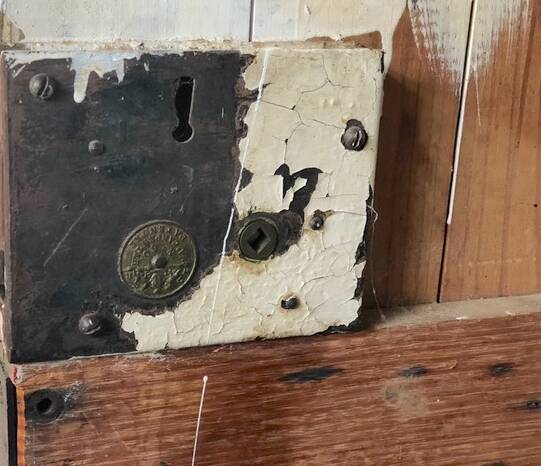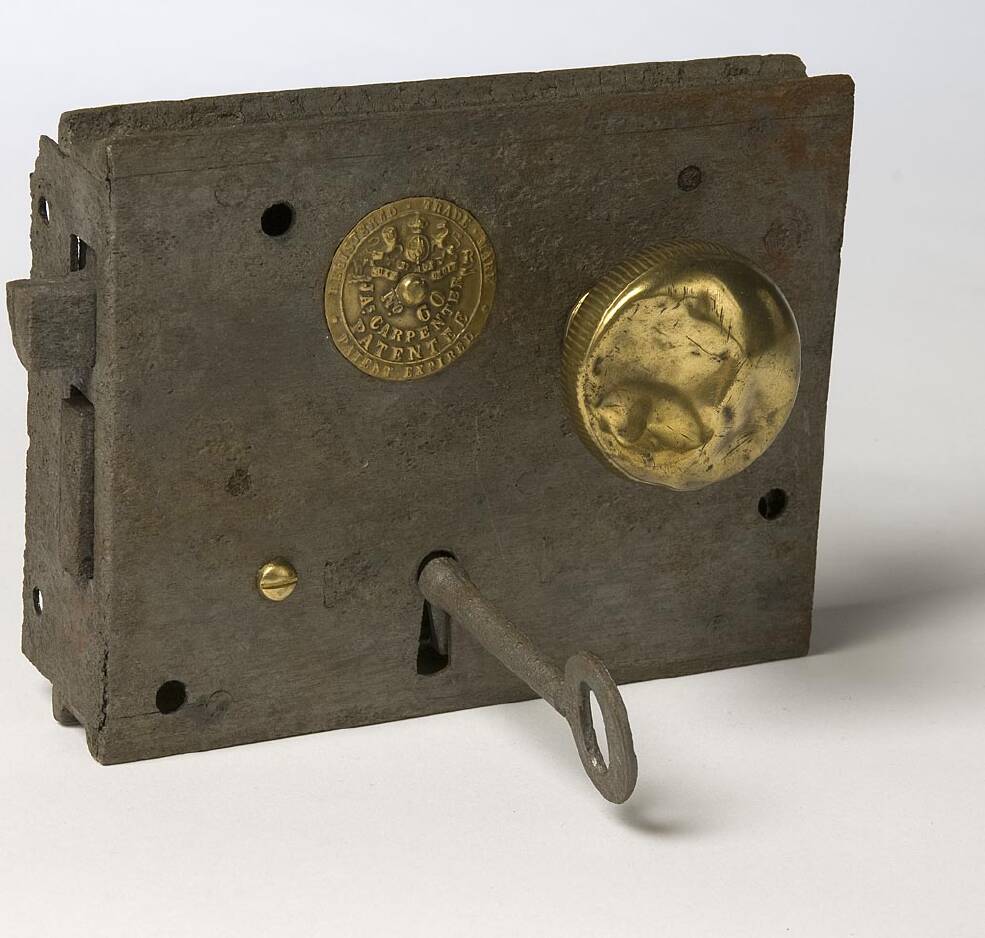
This column's recent exposé on the electric car constructed by bureaucrat Sir Roland Wilson using bits and pieces from junk shops and rubbish tips around Canberra during 1942 prompted a bulging mailbag about the innovative contraption which is now held by the Powerhouse Museum in Sydney.
Many comments reflect that of Sarah Smithers of Kaleen who writes, "Great to see a bureaucrat thinking outside the square, something that you're unlikely to see in today's risk-averse public service."
My shout-out for photographs of Wilson driving his invention around Canberra were also answered. First, several readers directed me to personal papers held by the National Library of Australia where among boxes of Wilson's personal notes were three tiny photographs of his car.

But the real treat in sifting through the boxes of material were the treasure trove of sketches and diagrams that Wilson had scrawled on pieces of paper during the design phase of his car. It also flushed out a circa-1942 photo of Wilson parked outside Old Parliament House while he was Secretary of the Department of Labour and National Service, offering a lift to his Minister, the Honrable E.J (Eddie) Ward. Heck, you wouldn't see that happen these days.

The photo appears in Sir Roland Wilson: A Biographical Essay by Selwyn Cornish (Sir Roland Wilson Foundation, 2002) in which Cornish explains that Wilson continued to drive his electric car until it was replaced by a Buick, which he purchased while in the United States in the late 1940s.
Cornish also reveals that Wilson's inventive genius didn't stop with the electric car - he later patented a prefabricated, do-it-yourself tricycle. "Although several manufacturers showed an interest in the invention, its cost, and the fading of the do-it-yourself craze, meant that it was never developed beyond a prototype," reports Cornish.

Meanwhile, Wilson's nifty invention may also not have been Canberra's first home-made electric car after all.
Julian Abbott of Ainslie points out that in Past Images, Present Voices: Kingston and Thereabouts Through a Box Brownie (Canberra Stories Group, 1996) author Val Emerton, his late mother-in-law, reports of another electric vehicle on Canberra's roads in the early 1940s.
During wartime petrol rationing, when most people had to sell their cars, convert them to run on gas or charcoal or put them up on blocks to await the war's end, Emerton's dad acquired "a small electric car which Capitol and Civic Theatres had been using to transport films back and forth between the two cinemas".

"The cart [which was similar in appearance to a modern-day golf cart], was painfully slow and needed charging every day to the household supply, but it was a means of transport," reports Emerton.
"While her dad 'was very proud' of his purchase, Emerton reveals her "mum took one look at it and decided to walk to the shops rather than sit up in this maroon monstrosity which whirred along so slowly that no one could miss who was sitting up in it."
In her book on wartime in Canberra, A bookshop in Wartime (Arcadia, 2020), Jennifer Horsfield explains that the manufacturers of bicycles also did a very good trade during petrol rationing, with cheerful advertisements in The Canberra Times promoting the health-giving benefits of cycling.
"We don't miss the car a bit, confesses a housewife whose family all ride Malvern Star bikes" blared one ad, while another, appearing on October 19, 1940, just after the introduction of petrol rationing, shows a doctor advising his overweight, middle-aged patient, "Petrol rationing will be a God-send to you, and provide you with the mild exercise you need".
A TALE OF THREE RIVERS

While recently exploring the Cotter with his Yowie Cubs Pack, Dan Backhouse of Casey snapped this photo of the confluence of the Cotter River with the Murrumbidgee River, taken from the road bridge near the historic Cotter Pumping Station.
Backhouse asks, "What's the source of the plume in the Cotter River which when viewed in the nearby Cotter Avenue just below the dam wall, appears to be much clearer?"
It turns out, the eye-catching streak of turbidity is from the Paddys River which flows into the Cotter River just upstream of where the the Cotter joins the Murrumbidgee River.
"The wet weather has highlighted the erosion and turbidity issues on the Paddys River," reports Woo O'Reilly of Upper Murrumbidgee Waterwatch Facilitator. "While most of our major river systems saw improvements in their Catchment Health Indicator Program scores last year, the Paddy's was the exception with consistently high turbidity results."
AS LOCK WOULD HAVE IT

Neal Gowen of Kaleen has a door lock which he believes rivals in antiquity the lock found at the bottom of the well at Duntroon Dairy and which is squirreled away in the Canberra Museum and Gallery collection (Did You Know, April 5).
The "WR" abreast of the Royal Coat of Arms which appears on the lock held by CMAG and which indicates manufacture during the reign of William IV (1830-37), makes it the oldest artefact held by CMAG. The same logo also appears on Gowen's reclaimed lock.

"We found our lock on the shed door at the back of our carport in Kaleen which was built back in 1976," reports Gowen. "For many years I didn't take much notice of it, but in recent years I inspected it more closely and it's the same type as the one in CMAG."
Gowen subsequently tracked down the builders of the carport but reports "unfortunately they can't remember where the lock was sourced, but like a lot of fittings in our house, it came from recycled building materials in Canberra."
Is this Canberra's first electric bike?

Sir Roland Wilson isn't the only trailblazing Canberra bureaucrat, who, in the face of adversity, has spent hours in their shed to make their own method of transport.
Over half a century after Wilson built his electric car; in the mid-1990s Defence department bureaucrat Craig Collins constructed an electric bike for his daily commute from Isaacs to Anzac Park West. While Wilson's invention was to combat the effect of petrol rationing, Collins' homemade machine was in response to - wait for it - ever increasing parking fees.
Now, if you think his bike was a fancy prototype for one of those superfast light-weight electric bikes on the market today, then think again.
Collin's contraption was cobbled together over a period of six months in 1995 using the frame of a secondhand Malvern Star mountain bike he bought through The Canberra Times classifieds.

"I found a Sturmey-Archer 3 speed hub at Revolve for the front wheel which I powered via a chain drive through a permanent magnet motor bought off a motorised mobility-aid seller," reveals the backyard inventor.
"The wires looping out and around made it look wacky, but it had a top speed of 50km/h, with a range of around 50 kilometres when pedal assisting," reveals Collins.
"The downside was the overall weight, at around 50kg, more than twice a modern e-bike so it needed to be driven with respect for your own life," muses Collins.
Just like Wilson's car turned heads, so too did Collins' clunky e-bike, which despite its weight had a "superb" power to weight ratio. "It gave me great satisfaction to accelerate past groups of serious lycra-clad guys on their road bikes, wearing my work gear and not even pedalling," says Collins, adding "I'd often hear 'that's cheating' as I'd disappear out of sight."
Collins kept riding his homemade bike right up until his retirement in 2017. "It served me well, only needing the occasional new tyre and a few spokes," he explains.
WHERE IN THE SNOWIES?

Rating: Medium
Clue: "High country"
How to enter: Email your guess along with your name and address to tym@iinet.net.au. The first correct email sent after 10am, Saturday June 11 wins a double pass to Dendy, the Home of Quality Cinema.
Last week: Congratulations to Julie Nimmo of Kambah who was first to identify last week's photo as a wooden pole with ring at the entrance to the Tangmangaroo Anglican Church yard on the Lachlan Valley Way, about 27 kilometres south of Boorowa.

"We always allowed the dogs to stretch and chase rabbits there," reports Julie, who regularly stops at the church, located halfway between her Canberra home and family farm. "It's always beautifully tended and maintained," she adds.
Julie just beat Judi Pearson of Fraser to the prize, who, like your akubra-clad columnist, "loves venturing through old church yards and cemeteries".

Readers suggested a wide range of seemingly logical suggestions for the unusual wooden carving and metal ring which D.W. Popinjay reckons should be nicknamed "Ringo Barrk", including to hang either flowers, a mailbag, or a lantern from. Others suggested it "was a device to tie your horse up to in the old days" and Chris Fis wasn't the only person to fancifully suggest "it was designed for jousting practise".
However, according to Penny Buckmaster whose husband has several family connections to the area, "the ring used to hold a triangle which was struck with a steel rod to signal the start of church services". Who'd have thought? And she's right, serial solver of this column's mysteries, David Holgate, even managed to find a photo of the unusual feature on the Bonzle website, date, and photographer unknown. I wonder what happened to the triangle?








